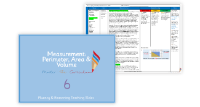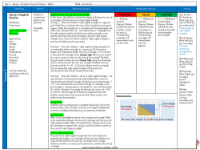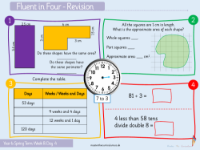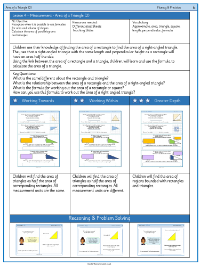Perimeter, Area and Volume - Area of a Triangle (2) - Presentation

Maths Resource Description
In a series of engaging teaching slides, students are invited to deepen their understanding of how to calculate the area of triangles, specifically focusing on right-angled triangles. The slides begin by prompting students to recall the formula for the area of a rectangle and then challenge them to consider how this knowledge might be applied to triangles. The initial activities guide students to estimate the area of a triangle by counting squares on a grid, then transforming the triangle into a rectangle with equivalent height and width to calculate the area. This process illustrates that the area of a right-angled triangle is consistently half the area of the corresponding rectangle, with examples showing the triangle as 20 squares and the rectangle as 40 squares, reinforcing the concept.
Further activities build on this foundation, with students using the formula for the area of a rectangle (length x height) and then adjusting their calculations to find the area of the triangle by dividing by two. This leads to the discovery of the formula for the area of a triangle, which is (length x height) ÷ 2. The slides provide varied examples, including visual representations and numerical problems, to practice this method. For instance, a rectangle with dimensions of 4 cm by 8 cm has an area of 32 cm², and thus the area of the corresponding triangle is 16 cm². The lesson also incorporates reasoning tasks, such as correcting misconceptions about the necessary dimensions for area calculation and exploring different integer dimensions that can result in a given area. Independent work tasks further reinforce the concepts, encouraging students to apply the formula and discuss the properties and relationships between rectangles and right-angled triangles.




